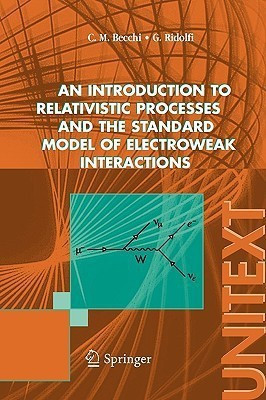An Introduction to Relativistic Processes and the Standard Model of Electroweak Interactions(English, Paperback, Becchi Carlo M.)
Quick Overview
Product Price Comparison
The natural framework of high-energy physics is relativistic quantum ?eld theory. This is a complex subject, and it is di?cult to illustrate it in all its aspects within a normal undergraduate course in particle physics, while devoting a su?cient attention to phenomenological aspects. However, in the small-wavelength limit, the semi-classical approximation is, in many cases of practical relevance, accurate enough to provide reliable predictions without entering the technicalities connected with radiative corrections. In particular, in the framework of the semi-classical approximation it is possible to obtain, in alimited number of pages,the expressionsfor relativisticcrosssections and decay rates in a self-contained and rigorous presentation, starting from the basic principles of Quantum Mechanics. Furthermore, even in the case of the standard model of Electroweak Interactions, the construction of the theory in the semi-classical approximation is exhausted by the study of the classical Lagrangian; many di?cult problems, such as those related to the unphysical content of gauge theories, can be dealt with by means of simple prescriptions.Thesearethereasonsthathavedeterminedourchoicetobasetheselecture notes on the semi-classicalapproximationto relativisticquantum ?eld theory. Webelievethatthisapproachleadstoadescriptionofthemostrelevantph- ical processes in high-energy physics, which is adequate to an undergraduate level course on fundamental interactions. Ofcourse,the lackof controlonradiativecorrectionshassomedrawbacks: forexample,theroleofanomalies,andthelimitationstotheHiggsmechanism, cannot be discussed in this context. These issues, however, are beyond the scope of the present text. During the preparation of our manuscript we have bene?ted of the inva- able help and encouragement of Raymond Stora. We are also grateful to our editor Marina Forlizzi for her continuous assistance and frieldly advices. Genova, Carlo M.


